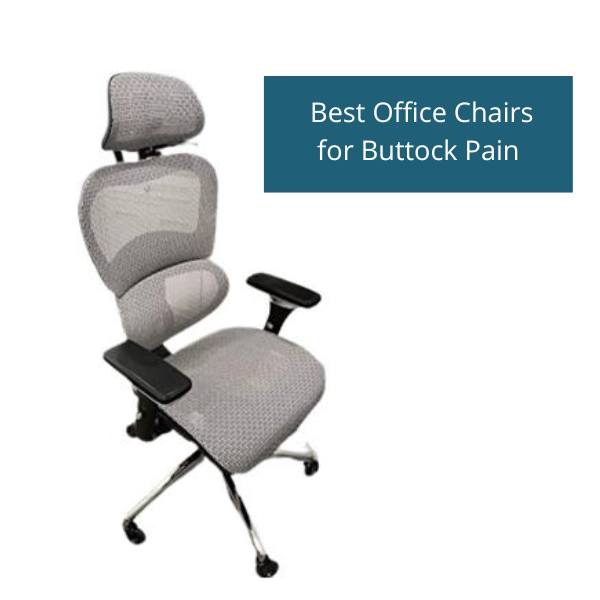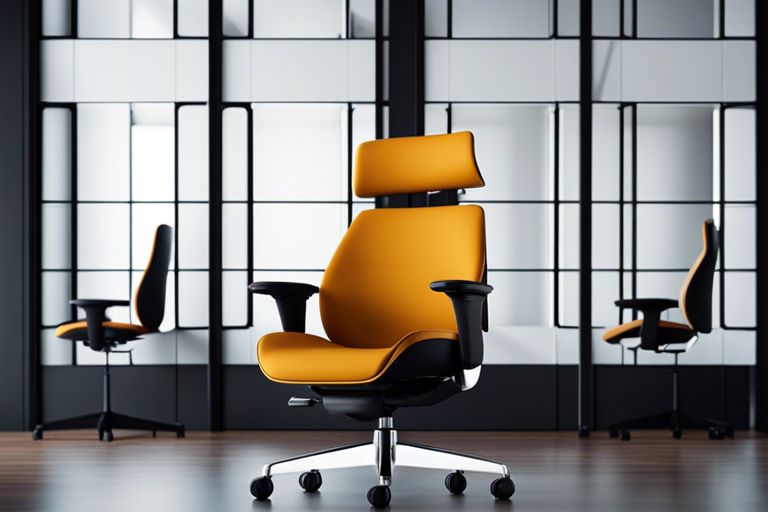If you have an office space at home with carpeted floors, you’ve likely noticed indentations, fraying, and other damage caused by your office chair’s wheels. This damage occurs gradually over time, leaving your carpet looking worn, uneven, and just plain ugly.
Office chair wheels apply concentrated pressure that literally crushes carpet fibers. Even if you have a high-quality carpet, constant rolling back and forth will break down the fibers, matting them down and compromising the carpet’s structural integrity.
Why this Guide is Worth Reading
Protecting your carpet investment from office chair damage is possible! This guide will walk you through everything you need to know to keep your home office carpeting looking great.
You’ll learn exactly how office chairs damage carpets when you need to take action and how to choose the right chair mat for your space. We’ll also cover proper chair mat use and maintenance. Read on to extend the life of your carpet and make your home office look neat and professional.

Identifying the Culprit: Office Chairs and Carpet Damage
How Office Chair Wheels Cause Damage
Standard office chairs have wheels that allow you to roll smoothly across the floor. These wheels concentrate a lot of force onto a small surface area. This force crushes the carpet fibers as you roll back and forth over the same area daily.
Over time, the crushed fibers weaken and unravel or break. This causes visible damage in flattened areas, fraying, bald spots, and ripped or torn carpet seams if you have wall-to-wall carpeting.
The Impact of a Rolling Chair on Carpets
Unlike hard surface flooring, carpet is not designed to withstand the constant concentrated force of an office chair’s wheels. Even high-traffic carpets will show signs of damage.
Thinner, lower pile carpets are especially vulnerable, but even plush, thick carpets will become permanently indented and damaged without proper protection.
Why Desk Chairs are a Threat to Your Carpet
Unlike furniture legs that stay in one spot, desk chairs are designed to provide flexibility and movement. This constant rolling back and forth makes them especially damaging to carpets over time.
And since desk chairs are used for prolonged periods while you’re working, the cumulative damage can be significant. Even if you can’t see obvious damage, the carpet fibers are likely weakened and at risk.
Recognising the Need for a Solution: The Dangers of Ignoring the Problem
The Long-Term Effects of a Damaged Carpet
Over time, ignoring early signs of office chair damage can lead to extensive wear and tear. Crushed fibers will continue to unravel and deteriorate.
Eventual effects include:
- Permanent indentations
- Visible bald spots or areas of extreme thinning
- Loose, frayed fibers
- Torn or ripped seams
- Trip hazards from uneven wear
This not only looks unprofessional, but can create safety issues and potentially void your carpet warranty.
The Hidden Costs of Office Chair Damage
Replacing carpet earlier than expected is a major unexpected expense. The average carpet replacement cost for a 10×12 room is $700-1000. For wall-to-wall carpeting throughout a home office or den, costs can exceed $2000.
A quality chair mat is a small investment that returns huge savings by extending your carpet’s life significantly.
Introducing the Hero: The Chair Mat
What is a Chair Mat?
A chair mat is a flat protective surface designed to be placed on the floor underneath an office chair. It provides a smooth gliding surface for the chair’s wheels, preventing direct contact with the carpet.
How Chair Mats Protect Carpets
Chair mats work by distributing the pressure from chair wheels across a larger surface area instead of a single point. They also provide a smooth surface designed for the chair to roll easily across without sinking into the carpet pile.
This alleviates the constant crushing force and friction that damages carpet fibers over time. It allows the chair to move freely without putting excessive force on any one area.
Types of Chair Mats: Polycarbonate and Others
The strongest and most effective mats are made of polycarbonate. This extremely durable plastic material can withstand years of daily use without cracking or deforming.
Other options include vinyl and rubber chair mats. These are less expensive but more prone to damage over time.
Choosing the Right Chair Mat for Your Carpet
Assessing the Size of Your Desk and Office Space
Take measurements of the entire area your chair will be moving around to ensure full coverage. Standard mat sizes range from 36″ x 48″ up to 60″ x 72″.
For large or oddly shaped desk configurations, look for chair mats with lipped edges that provide more coverage. Measure carefully for an accurate fit.
Matching the Chair Mat to Your Carpet Type
Chair mats are designed for specific carpet piles. Using the right one prevents the chair from sinking into the carpet around the edges of the mat:
- Low pile carpet mats have a thin profile and smoother surface for tight carpets like Berber.
- High-pile carpet mats are thicker to sit atop plush and shag carpets without sinking in.
Understanding the Difference Between Chair Mats for Low Pile and High Pile Carpets
The main difference is the height of the mat’s surface. Low-pile chair mats hug the carpet tightly so the chair wheels stay on the mat’s surface.
High-pile mats have a raised surface to keep the chair wheels from sinking into the thicker carpet around the mat’s edges.
Installing and Using Your Chair Mat
Where to Place Your Chair Mat
Center the chair mat around your desk chair’s wheel area for full coverage as you roll. Make sure there is sufficient overlap under the desk and in front.
Ensuring Your Chair’s Wheels Stay on the Mat
Check that the mat is large enough to accommodate the chair’s full range of motion. The wheels should not extend past the mat’s edges at any point.
For extra protection, choose a mat with lipped edges that help prevent accidental movement off the mat.
Preventing Chair Mat Movement
Look for a chair mat with non-slip backing to keep the mat firmly in place. These grip the carpet to prevent the mat from shifting.
You can also use double-sided carpet tape around the edges to adhere it firmly to the floor.
Maintaining Your Chair Mat and Carpet
When and How to Clean Your Chair Mat
Clean the chair mat regularly with mild soap and water to prevent dirt and debris buildup. This helps maintain a smooth, gliding surface.
For polycarbonate mats, you can also use diluted isopropyl alcohol for occasional disinfecting.
Tips for Keeping Your Carpet in Good Condition
Use a vacuum cleaner with an adjustable height setting. Raise it to the highest setting that still effectively removes dirt and debris without excessively agitating the carpet fibers.
Spot clean spills and stains right away to prevent permanent damage. Invest in annual professional steam cleaning services.
When to Replace Your Chair Mat
Look for signs of cracking, clouding, curling edges, or deformation. Polycarbonate mats typically last 8-10 years with proper care. Replace vinyl and rubber mats every 4-5 years.
Other Ways to Protect Your Carpet from Office Chairs
Considering Chairs Without Wheels
Stationary desk chairs eliminate the risk of rolling damage. However, wheels provide more flexibility and adjustability in terms of mobility and positioning. If you prefer the convenience of a chair with wheels, alternative ways to protect your carpet exist.
One option is to use chair glides or casters specifically designed for carpeted surfaces. These attachments distribute the chair’s weight more evenly, reducing the risk of indentations or sinking into the carpet. They come in various materials like rubber or felt, which provide a smooth surface for easy movement without damaging the carpet fibers.
Another method is to place a protective mat or carpet protector underneath the chair. These mats shield the carpet from the constant pressure and friction caused by chair movements. They are usually made of durable materials like PVC or polycarbonate, providing a sturdy barrier between the chair and the carpet.
Additionally, you can consider using a carpet pad or underlay beneath the entire area where your chair is positioned. These pads add an extra layer of cushioning and support, reducing the impact on the carpet fibers when you move your chair. They help distribute the weight more evenly and prevent excessive sinking or indentations.
Lastly, maintaining proper chair maintenance is crucial to minimizing damage to your carpet. Regularly inspect the wheels of your chair and clean them of any debris or hair that may get caught. Lubricate the wheels if necessary to ensure smooth rolling without putting too much strain on the carpet.
By implementing these measures, you can enjoy the flexibility of a chair with wheels while protecting your carpet from potential damage. Finding the right balance between mobility and carpet care is important to create a harmonious workspace environment.
Q: What is the best way to protect my carpet from office chair damage?
A: The best way to protect your carpet from office chair damage is by using an office chair mat. Office chair mats are specially designed to provide a smooth surface for office chairs to roll on, preventing them from digging into the carpet fibers and causing damage.
Q: How does an office chair mat protect the carpet?
A: An office chair mat acts as a barrier between the office chair and the carpet. It provides a smooth and durable surface for the chair to roll on, reducing the friction and pressure on the carpet fibers. This helps to prevent wear and tear, as well as indentations and snags that can occur from the constant movement of an office chair.
Q: What should I look for in a chair mat for carpeted floors?
A: When choosing a chair mat for carpeted floors, it is important to consider the thickness, material, and size of the mat. Look for a mat that is thick enough to provide adequate protection to your carpet, made from high-quality materials that are both durable and slip-resistant. Additionally, ensure that the mat is large enough to accommodate both the chair and your desk area.
Q: Can any type of carpet be protected with a chair mat?
A: Chair mats come in different types and sizes to accommodate various carpet styles and thicknesses. However, it is important to consider the type of carpet you have before purchasing a chair mat. Some carpets, such as high-pile or shag carpets, may require a thicker or sturdier mat to provide proper protection.
Q: How do I keep the chair mat in place on the carpet?
A: To keep the chair mat in place on the carpet, it is recommended to use a chair mat with grippers or spikes on the underside. These grippers help to anchor the mat to the carpet, preventing it from shifting or sliding around when you move your chair. Additionally, some mats come with adhesive strips or tabs that can be used to secure the mat to the carpet.
Q: Can using an office chair mat prevent office chairs from damaging the carpet?
A: Yes, using an office chair mat can prevent office chairs from damaging the carpet. The smooth surface of the mat allows the office chair to glide smoothly, reducing the friction and pressure on the carpet fibers. This helps to minimize wear and tear, prevent indentations, and protect the carpet from spills and stains.
Q: Are there any alternatives to using a chair mat?
A: While an office chair mat is the most effective way to protect your carpet from office chair damage, there are some alternatives you can consider. One option is to use furniture sliders or glides under the chair legs, which can help to reduce the friction and pressure on the carpet. However, these alternatives may not provide the same level of protection as a chair mat.
Q: How often should I replace my chair mat?
A: The lifespan of a chair mat can vary depending on its quality and usage. Generally, it is recommended to replace your chair mat every 1-2 years, or sooner if you notice any signs of wear and tear. Over time, the mat may become worn or cracked, which can reduce its effectiveness in protecting the carpet.
Q: Can I use a chair mat on hardwood or tile floors?
A: Yes, chair mats can also be used on hardwood or tile floors to protect them from office chair damage. However, it is important to choose a chair mat specifically designed for hard floors, as these mats are usually made from materials that are suitable for these surfaces.
Q: Can using a chair mat prevent my office chair from rolling on the carpet?
A: Yes, using a chair mat can help to prevent your office chair from rolling on the carpet. The smooth surface of the mat provides less resistance, making it easier for the chair to glide rather than roll. This can help to keep your office chair in place and prevent it from accidentally rolling away when you are seated.
- How to choose the right office chair for your body type? - December 19, 2023
- What are the best ergonomic features to look for in an office chair? - December 18, 2023
- Is sitting on an exercise ball an effective alternative to a traditional office chair? - December 15, 2023





